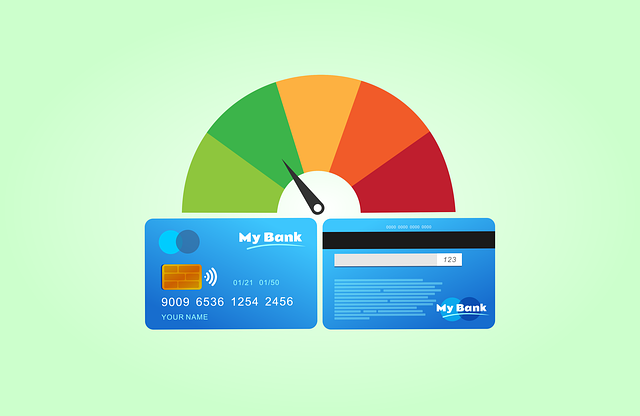Understanding different types of working capital loans is crucial for businesses aiming to boost growth and manage cash flow. These short-term funds offer immediate access, flexible terms, and improved liquidity, but require a strong credit history, stable revenue, and accurate financial records. The application process involves detailed disclosures, with interest rates varying by lender, business type, and creditworthiness. Thorough research is key to finding the best-suited lender for seamless access to much-needed funds for covering expenses, navigating seasons, or investing in expansion. By carefully considering financial goals, operational needs, and loan terms, businesses can strategically choose working capital loans to drive growth and overcome market challenges.
“Unleash your business potential with the power of working capital loans—a strategic financing tool for savvy entrepreneurs. This comprehensive guide navigates the dynamic world of working capital loans, demystifying their various types and benefits. Discover how these loans can revolutionize cash flow management, drive growth, and fuel your business’s journey.
From understanding loan requirements to deciphering interest rates, we’ll equip you with insights for a successful application process. Learn the art of choosing the right working capital loan to align with your strategic goals and unlock new opportunities.”
- Understanding the Types of Working Capital Loans
- Working Capital Loan Benefits: Boosting Business Cash Flow
- Unraveling the Requirements for Securing a Working Capital Loan
- Deciphering Working Capital Loan Interest Rates and Costs
- Choosing the Right Working Capital Loan: A Strategic Approach
Understanding the Types of Working Capital Loans

Understanding the types of working capital loans is crucial for businesses looking to enhance their growth strategies. These loans are designed to support operational needs by providing short-term funding, typically used for covering expenses such as inventory, accounts payable, or day-to-day operational costs. Working capital loan benefits include immediate access to cash, flexible repayment terms, and the ability to improve cash flow management. However, there are specific requirements that businesses must meet to qualify, including a strong credit history, stable revenue streams, and accurate financial records.
Choosing the right working capital loan depends on several factors, such as the loan amount needed, interest rate considerations, and the application process. Interest rates vary based on lenders, business type, and creditworthiness. The application process usually involves providing detailed financial information, including bank statements and tax returns. Businesses should thoroughly research different lenders to find the best fit that aligns with their needs, ensuring a smooth and successful working capital loan experience.
Working Capital Loan Benefits: Boosting Business Cash Flow

Working Capital Loans offer a range of benefits that can significantly boost business cash flow and drive growth. Understanding the various types available is crucial, from short-term to long-term options, each catering to different needs. These loans are designed to provide businesses with immediate financial support, allowing them to cover operational expenses, manage seasonal fluctuations, or invest in expansion opportunities.
When considering a working capital loan, it’s essential to evaluate your business’s requirements and goals. Lenders will assess factors like revenue streams, debt levels, and cash flow projections. Choosing the right loan type involves comparing interest rates, repayment terms, and any associated fees. A well-timed application can provide access to much-needed funds, enabling businesses to take advantage of market opportunities, negotiate better terms with suppliers, or simply maintain stable operations during challenging periods.
Unraveling the Requirements for Securing a Working Capital Loan

When considering a working capital loan as a growth strategy, understanding the requirements is crucial. These loans, designed to support day-to-day operations and provide short-term financial liquidity, come in various types tailored to different business needs. From lines of credit to term loans, each offers unique features and benefits such as quick access to funds, flexible repayment terms, and potential tax advantages. However, securing one isn’t straightforward. Lenders will evaluate your business’s financial health, cash flow projections, and collateral offerings before approval.
The working capital loan application process involves providing detailed financial statements, forecasting future performance, and justifying the need for the loan. Meeting specific requirements like a positive credit score, stable revenue streams, and a clear plan for repayment significantly increases your chances of approval. Moreover, understanding the interest rates offered and the potential impact on your bottom line is essential. By carefully considering these factors and choosing the right type of working capital loan, businesses can leverage this strategy to fuel growth and navigate market challenges effectively.
Deciphering Working Capital Loan Interest Rates and Costs

When considering a working capital loan, deciphering interest rates and costs is crucial to understanding its true benefits and potential drawbacks. These loans, designed to provide businesses with immediate liquidity, come in various types tailored to different needs. From short-term lines of credit to term loans, each offers unique terms, including variable or fixed interest rates. Understanding these variations is key to choosing the most suitable option for your business.
The working capital loan application process involves evaluating your company’s financial health and growth plans. Lenders will assess your revenue streams, cash flow projections, and current debt obligations. This careful scrutiny ensures that the loan aligns with your requirements while considering the associated costs. Transparency about your business goals and financial standing is essential to a successful application, ultimately determining the interest rate you’ll be offered and the overall cost of borrowing.
Choosing the Right Working Capital Loan: A Strategic Approach

Understanding the types of working capital loans is a strategic first step in fueling business growth. These loans cater to various needs, from short-term cash flow management to financing expansion projects. Different loan structures, such as lines of credit or term loans, offer flexible repayment terms and varying interest rates. Businesses should weigh their financial goals and operational requirements to identify the most suitable type. Working capital loans provide significant benefits, including improved liquidity, enabling businesses to seize market opportunities and manage seasonal fluctuations.
When considering a working capital loan, it’s crucial to evaluate your company’s financial health and compliance with lender requirements. Lenders assess factors like credit history, cash flow projections, and collateral availability. A thorough preparation of financial documents and a clear understanding of the loan terms are essential during the application process. By carefully comparing interest rates, repayment conditions, and potential fees, businesses can make informed decisions, ensuring that the chosen working capital loan aligns with their strategic objectives.






